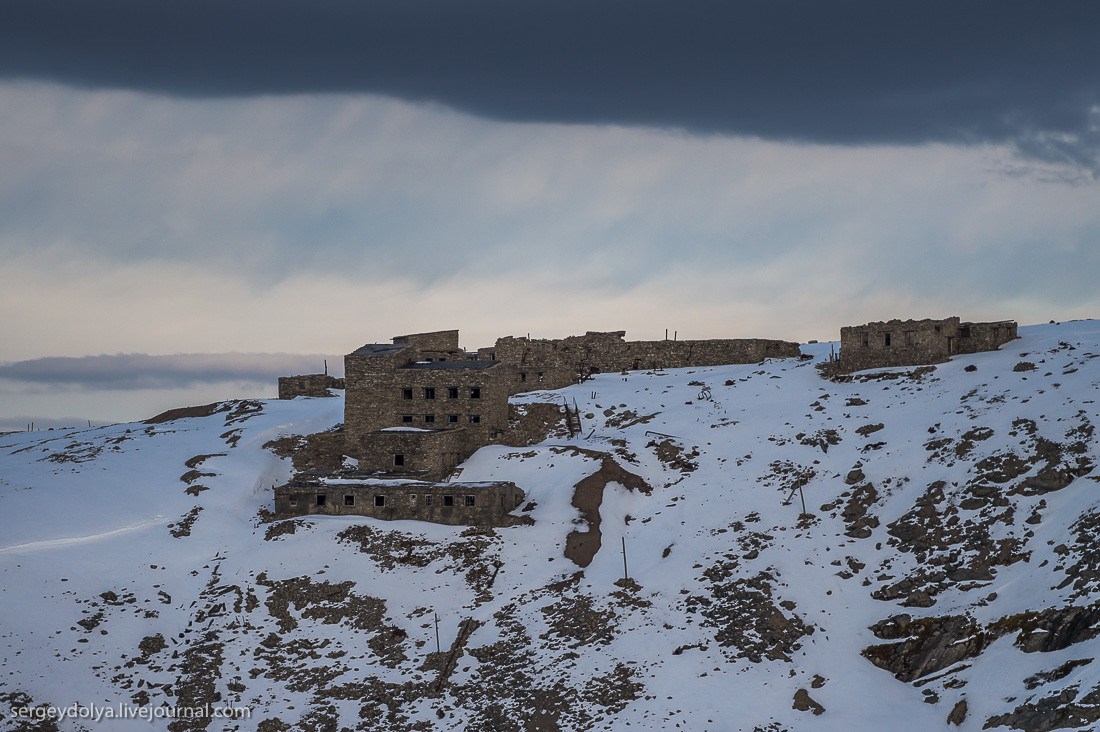Abandoned Metallurgy Giant
When I find myself in places like this one, to me they look like decomposing bones of the Soviet Union.

A huge metallurgic plant with a total area of more than 60 hectares (approx. 148 acres). The areas of its separate sections are hard to determine; hundreds, or maybe thousands, or maybe even tens of thousands sq. ft.

I had a chance to visit one of the buildings of this gigantic industrial facility. This is where metal was smelted. Underground carriers brought the material over from the railroad. But these were not the only undergound communications existing in the plant.

Under the floor of this section there is an intricate network of cable tunnels. In some places they are connected with other sections by passages. In the places where the tunnels intercect there are larger rooms and switgear rooms.

Unfortunately, all the cables were cut and stolen a long time ago, and the tunnels themselves have started flooding.

Apart from the underground tunnel network there is also a web of ceiling-mounted footwalks, rails for the cranes and ladders for cranemen.

Using these passages it is possible to get to almost any part of the section. You can also visit a craneman’s workplace.

Alhough the elevated crane cabin is not that high above the floor, its construction didn’t look all that reliable to me and it was a bit scary to go down there. I cannot imagine spending a whole workday in this cabin.

This crane trolley was used to move around the crane hook. Its carrying capacity was unbelievable: I think it might have reached dozens or maybe even hundreds of tons.

The building is shaped like a capital “L”. Right now we are looking down the smaller part of the “L”, but its size is still very impressive.

The view of the second level of the bigger part.

Continuing my tour of the footwalks I go to the opposite side of the smaller part of the building. I look back: here’s the view of the three black-and-yellow crane cabins I’ve just visited.

About halfway through the workshop. On a higher level you can see some more footwalks that are perpendicular as well as parallel to the footwalks of the level I’m standing at.

The other end of the section. It is possible to see cylinders filled with gas and oxygen down there. The metal elements are constantly being cut by locals and sold to scrap metal collecting facilities. Cylinders like these can be found in many places throughout the site.

Some more footwalks. There are cranes under me again, but different ones, and you can see the light coming through the windows in the roof. All the footwalks are evenly covered in dust and ash.

Have you ever been to an air-ventilation chamber? Or maybe a ventilation room? Or I don’t know, a ventilation hall in this particular case?

These rooms are in fact located on the roof of the building. There are two or three of them. This is where all the air shafts lead from all the levels and sections.

And again I am stunned by the scale of the structure. As a child, I used to watch a lot of American action films and I couldn’t understand how the characters were able to move around buildings using air shafts.
The shafts in our residential building were so small that no one but cockroaches could possibly move around in them. Looking at these huge ventilators I realize that in this facility you were able to not only move around in the shafts, but also stand up in there or even get lost.


From the ventilation room I went directly to the second level of the bigger part of the building.

I will come back here a bit later, and right now I’m going to take a walk under the cranes.

It’s one thing to look at them from the above, and I really wanted to see them in full detail.

This is apparently where the smelt metal was turned into products.

A control room. From here the operators kept watch over the metal heating process.

The control rooms from the outside.

There was a time when this facility provided thousands of workplaces. It produced loads of metal and metal products that were sold all over the country as well as used in the defense industry.

Another prop, but smaller.

For some reason these tools haven’t been stolen yet, although one would expect it. That’s why you can still see them lying around here and there as if the workers have just put them down to take a break.

There used to be boiling metal inside this thing, but now it’s just rust.

There is almost nothing left of this part of the building. Almost all the separating walls have been demolished; other construction elements have been taken apart. Now it’s just the columns and bearing walls.

But there are still some surprising things. For example, you don’t find a bulldozer in the second level of a plant’s section very often.

Nor do you usually find a ZIL truck.

During my very first visit this level was half filled with machines. There were dozens or even hundreds. Apparently, they had been brought here from all over the plant.

This is all that’s left here now.

Somewhere far off you can see the furnaces. The length of the bigger part is more than 300 m (approx. 1000 ft).

This part of the building had its own vent room on the roof.


This is where my tour comes to an end. Exploring every room, space and passage would take at least a week. And even after that the facility would still have in store some secrets and surprises for you.
Images and text by Dmitry Solodyankin, reproduced with permission






